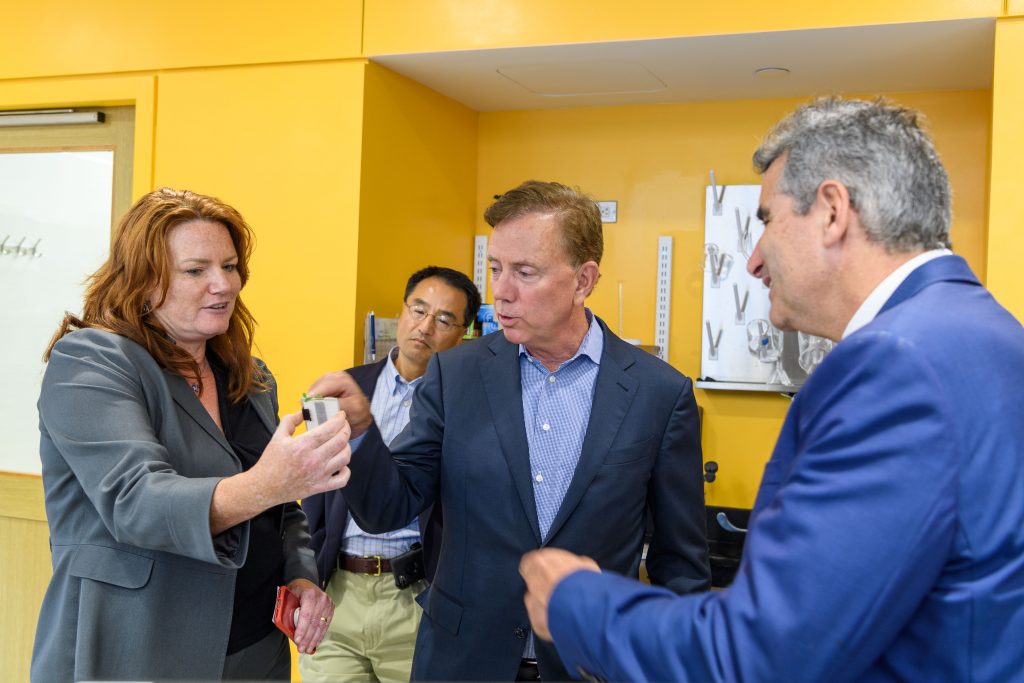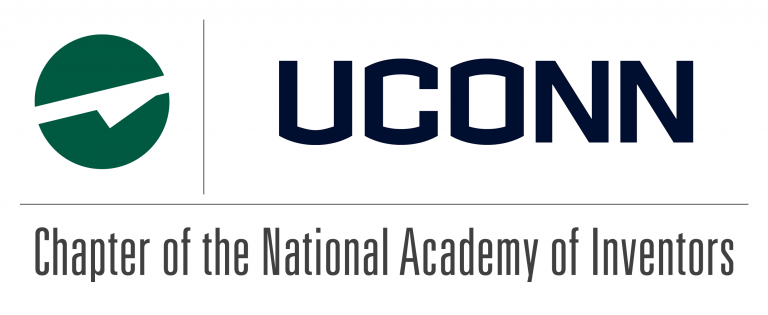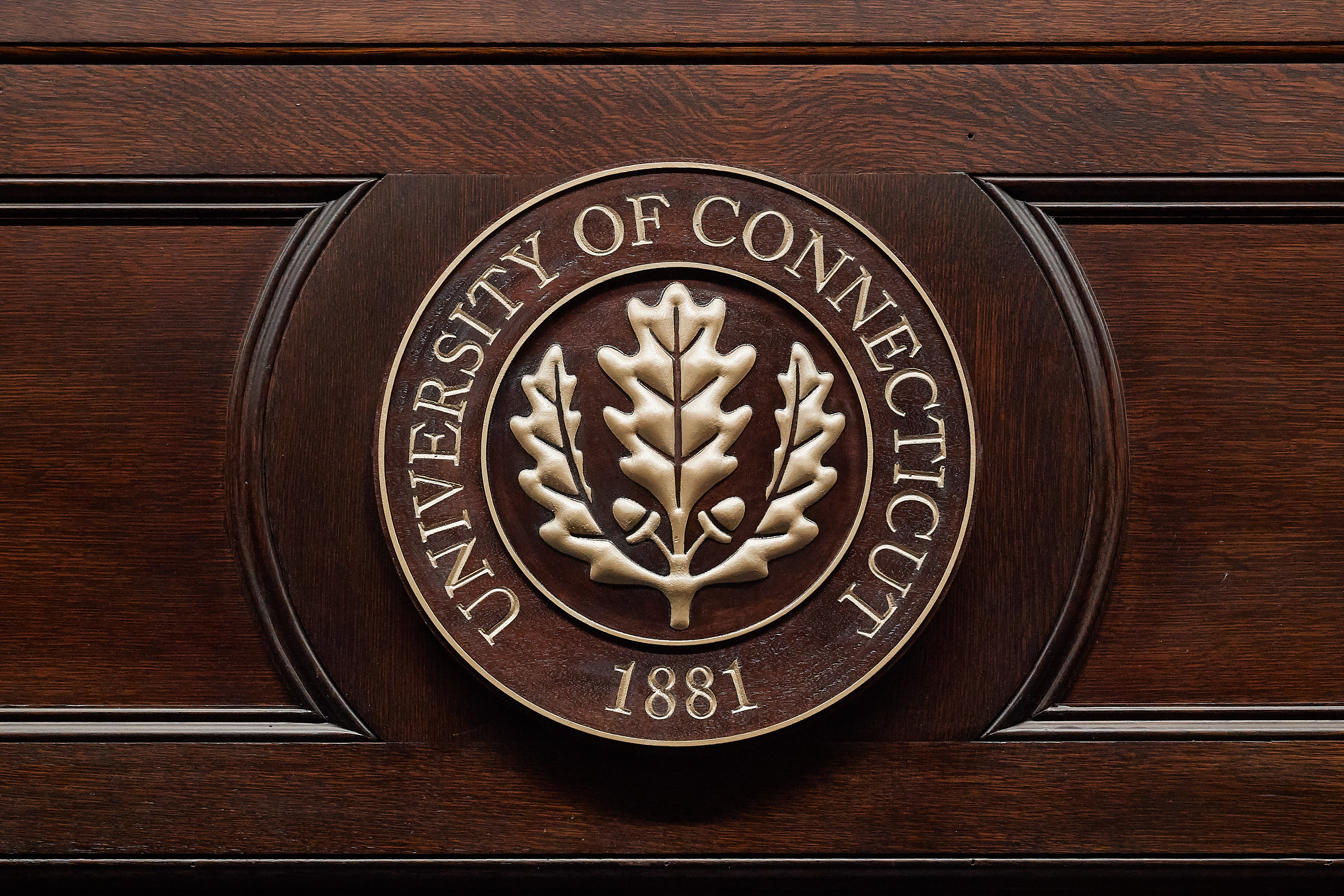President Thomas C. Katsouleas and Krenicki Professor of Biomedical Engineering Ki Chon have been named Fellows of the National Academy of Inventors (NAI), the organization announced on Tuesday, Dec. 8, 2020.
The NAI Fellows Program highlights academic inventors who have demonstrated a spirit of innovation in creating or facilitating outstanding inventions that have made a tangible impact on quality of life, economic development and the welfare of society. Election to NAI Fellow is the highest professional distinction accorded solely to academic inventors. To date, NAI Fellows hold more than 42,700 issued U.S. patents, which have generated over 13,000 licensed technologies and companies, and created more than 36 million jobs. In addition, over $2.2 trillion in revenue has been generated based on NAI Fellow discoveries.

The 2020 Fellow class represents 115 research universities and governmental and non-profit research institutes worldwide. They collectively hold over 4,700 issued U.S. patents. Among the 2020 Fellows are 24 recipients of the National Academies of Sciences, Engineering, and Medicine, six recipients of the American Academy of Arts & Sciences, and two Nobel Laureates, as well as other honors and distinctions. Their collective body of research covers a range of scientific disciplines including biomedical engineering, computer engineering, materials science, and physics.
The complete list of NAI Fellows is available here.
The class of Fellows will be inducted at the 2021 Fellows Induction Ceremony at the Tenth Annual Meeting of the National Academy of Inventors this June in Tampa, Florida.
“At the University of Connecticut we continue to add to and maintain an ecosystem comprised of outstanding researchers, inventors, educators, mentors and innovators who represent the core values the National Academy of Inventors. We are honored to welcome these two distinguished inventors to the ranks of Fellow” says Dr. Cato T. Laurencin, President of the UCONN NAI Chapter and a member of the NAI Board of Directors.
The UConn Chapter of the National Academy of Inventors has been established to
- Promote scientific innovation and inventorship across all disciplines in the UConn community
- Develop educational and mentorship programs around invention and inventorship
- Increase awareness regarding innovation and encourage the disclosure of intellectual property
- Drive engagement by bringing academia and industry together and
- Create a platform to share the lessons learned by the UConn inventors and other research communities in CT
Prior to arriving at UConn as its 16th president in August 2019, Katsouleas was the executive vice president and provost at the University of Virginia since 2015, having been appointed to the position after serving for seven years at Duke University as the dean of the Pratt School of Engineering and professor of electrical and computer engineering.
He was a researcher and faculty member at UCLA for seven years after receiving his Ph.D., before joining the University of Southern California faculty as an associate professor of electrical engineering in 1991, becoming full professor in 1997. He also was an associate dean of USC’s engineering school and vice provost of information technology services.

Katsouleas is a leading scholar in the field of plasma science and has authored or co-authored more than 250 publications. He has deep roots in academia, having served a term as president of the Faculty and Academic Senate at USC during his time in its engineering school.
He is a fellow of the American Physical Society and the Institute of Electrical and Electronics Engineers (IEEE). While at Duke, he also created the Grand Challenge Scholars Program of the National Academy of Engineering (NAE), a program now emulated at more than 120 universities across the U.S. and in several countries around the world.
Chon, Krenicki Professor of Biomedical Engineering, specializes in medical instrumentation, biosignal processing, modeling, simulation and development of novel algorithms to understand dynamic processes and extract distinct features of physiological systems. He is currently dedicating his time to the following research projects:
- Evaluation of the effects of oxygen toxicity and hyperbaric environments on the autonomic nervous system: The goal is to develop noninvasive approaches for early detection of and differentiation between fatal and non-fatal decompression sickness (DCS). Both swine and human experiments are being conducted to test the robustness of our algorithm for early detection and prediction of DCS.
- Real-time detection of atrial fibrillation, atrial flutter and atrial tachycardia from surface ECG: The goal is to develop real-time algorithms for accurate detection of atrial fibrillation, flutter and tachycardia that are especially applicable for Holter monitoring devices.
- Spatio-temporal analysis of renal autoregulation: The goal is to understand how nephrons synchronize to autoregulate renal blood flow using laser speckle imaging techniques.
- Noninvasive assessment of diabetic cardiovascular autonomic neuropathy (DCAN) from surface ECG or pulse oximeter: The goal is to develop noninvasive approaches for early detection of DCAN. Diabetic and control mice are used to collect ECG data and validation of computational data analysis results is measured against Western blot and immunohistochemistry.
- Vital sign monitoring from optical recordings with a mobile phone:The goal is to utilize a mobile phone video camera to extract vital sign and physiological parameters, which may include heart rate, oxygen saturation, respiratory rate, atrial fibrillation detection, blood loss detection, and the dynamics of the autonomic nervous system.
- Wearable devices for vital sign monitoring: The goal is to develop wearable devices (e.g., chest strap, wearable shirt and watches) and new sensors (e.g., dry ECG, skin conductance and EMG electrodes) to measure vital sign and physiological parameters for both dry and water immersion conditions.
Chon is currently a Fellow of the International Academy of Medical and Biological Engineering (IAMBE) as well as the American Institute for Medical and Biological Engineering (AIMBE).



